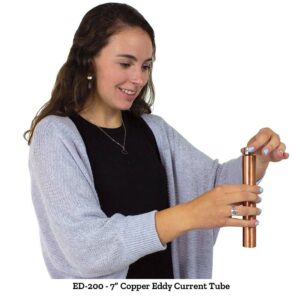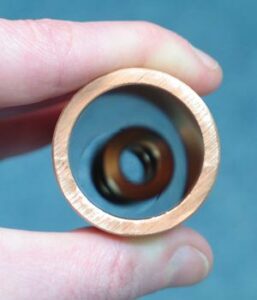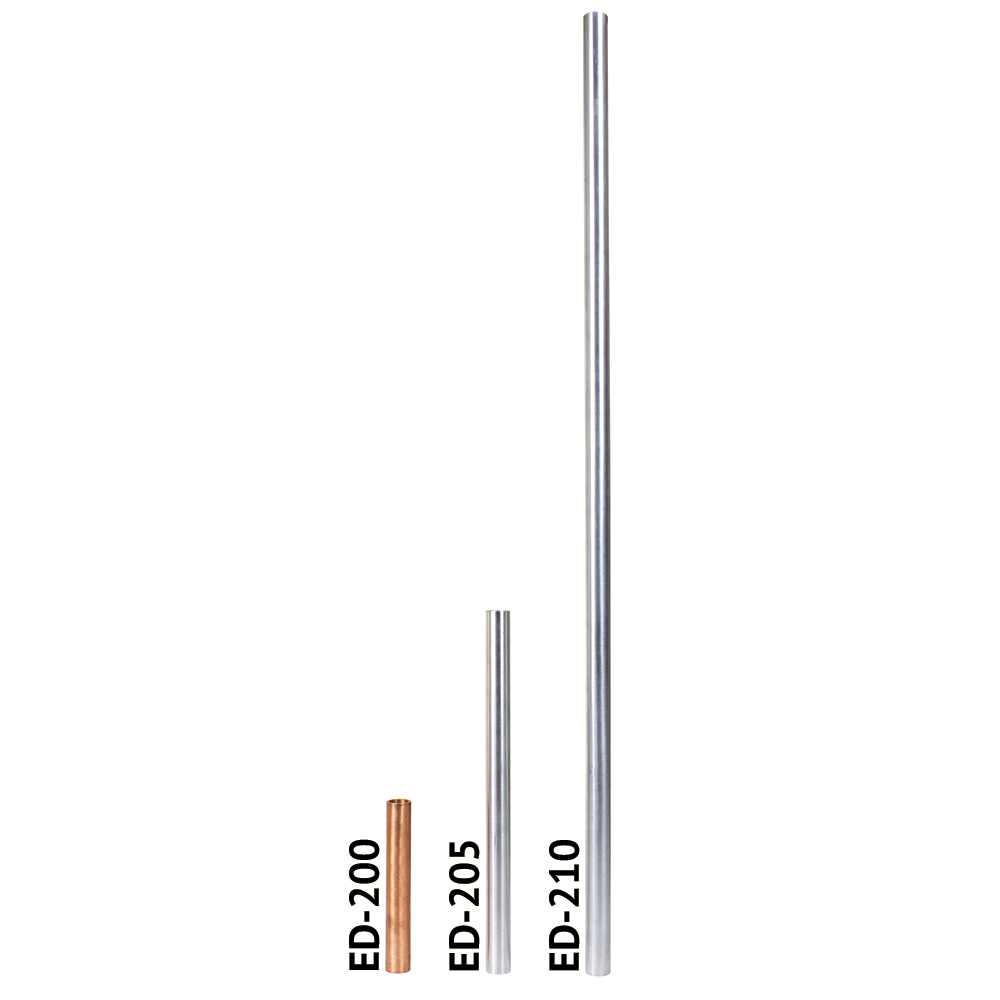An eddy current is a current set up in a conductor in response to a changing magnetic field. Lenz’s law predicts that the current moves in such a way as to create a magnetic field opposing the change; to do this in a conductor, electrons swirl in a plane perpendicular to the changing magnetic field. Because the magnetic fields of the eddy currents oppose the magnetic field of the falling magnet; there is attraction between the two fields. Energy is converted into heat.
This principle is used in damping the oscillation of the lever arm of many mechanical balances. At the end of the arm a piece of flat aluminum is positioned to move through the magnetic field of a permanent magnet. The faster the arm oscillates, the greater the eddy currents and the greater the attraction to the permanent magnet. However, when the arm comes to rest, the attraction is negligible.
Educational Innovations carries a variety of Eddy Current Tubes, so you can easily demonstrate this concept in your classroom. Visit our website to see our full line of Eddy Current Tubes and magnetic viewing film.
 If a single neodymium magnet has the same mass as a single cow magnet, the neodymium magnet will fall at a slower rate because its magnetic field strength is greater. Two neodymium magnets fall at a slower rate than one because the magnetic field strength has increased. The time of fall within the tube increases with the addition of other magnets. There is a point where the effect of the increase in mass becomes greater than the increase in magnetic field strength. Then, the group of magnets falls faster.
If a single neodymium magnet has the same mass as a single cow magnet, the neodymium magnet will fall at a slower rate because its magnetic field strength is greater. Two neodymium magnets fall at a slower rate than one because the magnetic field strength has increased. The time of fall within the tube increases with the addition of other magnets. There is a point where the effect of the increase in mass becomes greater than the increase in magnetic field strength. Then, the group of magnets falls faster.
A great activity to do in your classroom is to have your students determine the time it takes for one magnet to fall down the one-meter copper tube. Then calculate the average velocity of the magnet based on the time and the tube length. Assuming the velocity of the falling magnet to be constant, calculate the time it takes the magnet to fall in the shorter tube of the
same thickness.
 Thicker tubes increase the falling time due to stronger eddy currents from the greater number of conducting electrons. Have your high school level students suggest an experiment to determine the thickness of the tube by determining the rate of fall of a magnet within the tube.
Thicker tubes increase the falling time due to stronger eddy currents from the greater number of conducting electrons. Have your high school level students suggest an experiment to determine the thickness of the tube by determining the rate of fall of a magnet within the tube.
Determine the time for one magnet to fall through the 7 inch copper tube and measure the time for the same magnet to fall through the 15 inch aluminum tube. The falling times should be approximately the same. Relate the length of the tubes to the conductivity of the metals.
Eddy Current Tubes are excellent demonstrations of discrepant events! Introducing Eddy Current Rods, or by using magnetic viewing film allows your students to view the slow fall of the magnets. Your students will be mesmerized by what they see!

